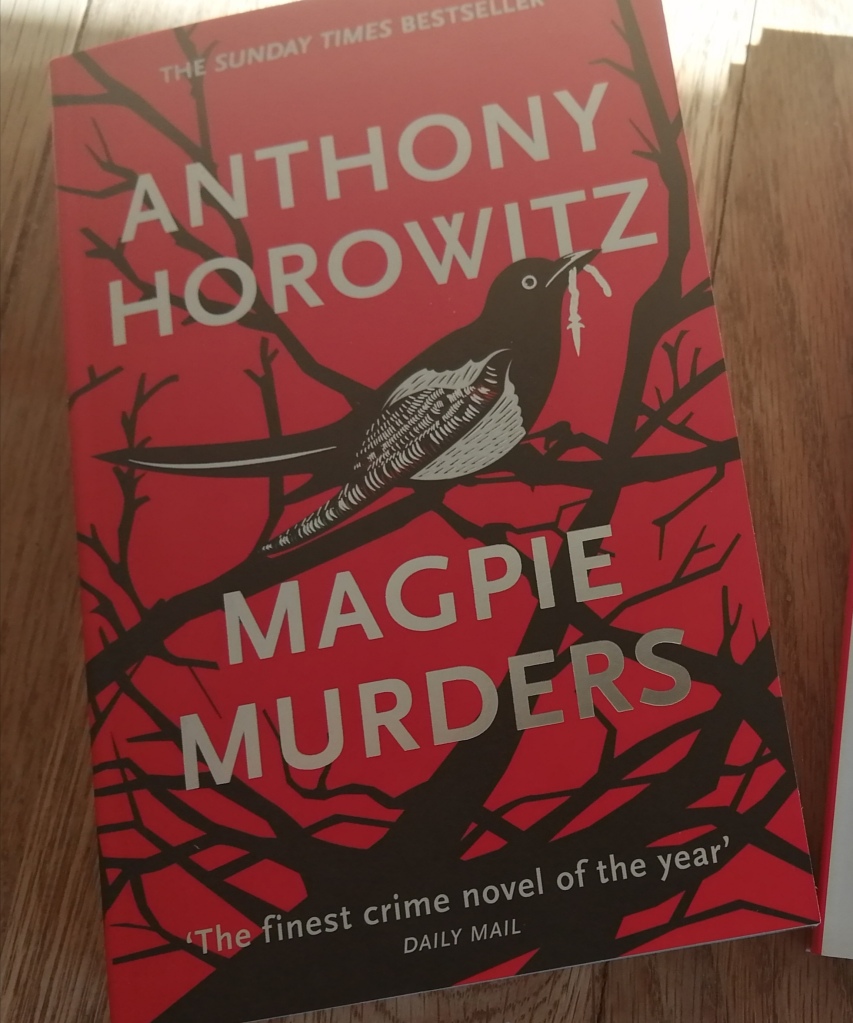I’ve long loved crime fiction, but my particular passion has usually been for the grittier, noir end of the genre. Whilst I admire the work and ingenuity that goes into those cosy whodunnits, they always struck me as something more akin to a cryptic crossword puzzle than a book. And to be honest, I’ve never been very good at crosswords – despite being an English teacher (full disclosure: I also fail abysmally at ‘Countdown’ every time I watch it).

Magpie Murders features a whodunnit, although it was clear from the moment I picked the book up and flicked through it that Horowitz’s take on this hoary old genre was altogether more meta and more slyly knowing. ‘Magpie Murders’ is the name of a novel within the novel, the latest in a best-selling series which features the (distinctly Poirot-esque) German refugee and investigator Atticus Pund investigating a murder in 1950s rural England.
What particularly grabbed my attention was the fact that this book within the book comes complete with title page, ‘by the same author’ page, and glowing reviews from such real-life thriller luminaries as Ian Rankin and Robert Harris (although not Horowitz himself – perhaps he thought that was a narcissistic step too far). But despite these trappings, what we are actually reading is the final pre-publication draft of this novel, sent by its author Alan Conway to his editor Susan Ryeland.
This is where Horowitz cleverly applies another layer to his narrative. In reading ‘Magpie Murders’ Ryeland uncovers a mystery; and when this is soon followed by a shocking phone call, she finds herself faced with a situation she feels compelled to unravel. It’s not long before these two fictional and ‘real’ worlds begin to collide, and Ryeland quickly finds herself swimming in some very murky waters.
Reading Magpie Murders, it’s clear that Horowitz knows his whodunnits and their tropes intimately. He constructs a post-war rural mystery that is both deviously self-aware and utterly satisfying, one that is also studded with firework-esque bursts of surprise. In parallel, Ryeland’s reluctant investigation into her bestselling author and his background is written in wry and sympathetic prose, which in contrast to the Atticus Pund section feels wholly contemporary. Caught up in a riddle she would rather not investigate, Ryeland is as tenacious as all the best detectives, and unable to look away until the truth has been exhumed.
Whilst playful is an excellent word to describe Magpie Murders, it is also a book that at times has a surprisingly hard edge, exploring as it does the bond between the writer and the characters created by them. There were a couple of occasions where I laughed out loud, taken utterly by surprise at the gulf between author and detective – but I’ll leave you to discover those at your leisure. Magpie Murders is one of those remarkable books that carries its own momentum, and after a while seems to read itself. I enjoyed every page, and didn’t think twice when I saw the sequel Moonflower Murders for sale in a charity shop last week, snapping it up immediately. I’ve little doubt it will deliver the same smart thrills as its predecessor.
